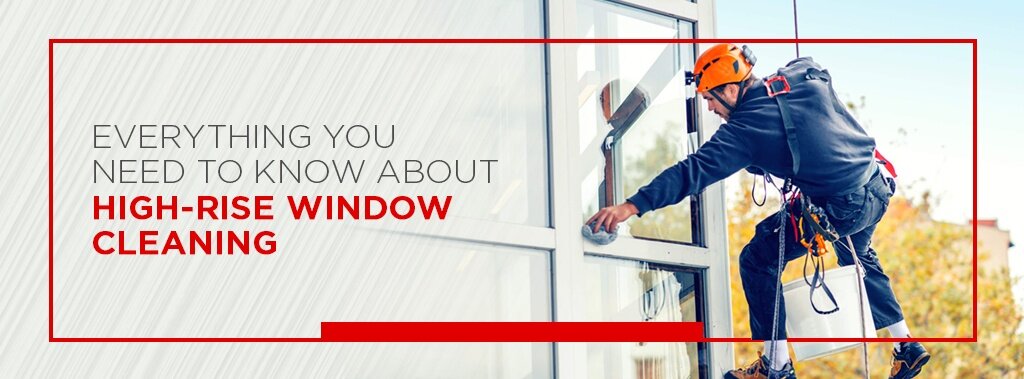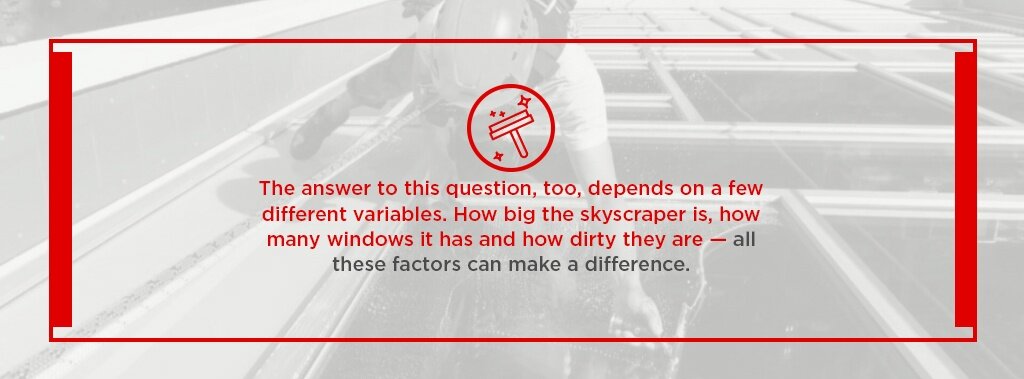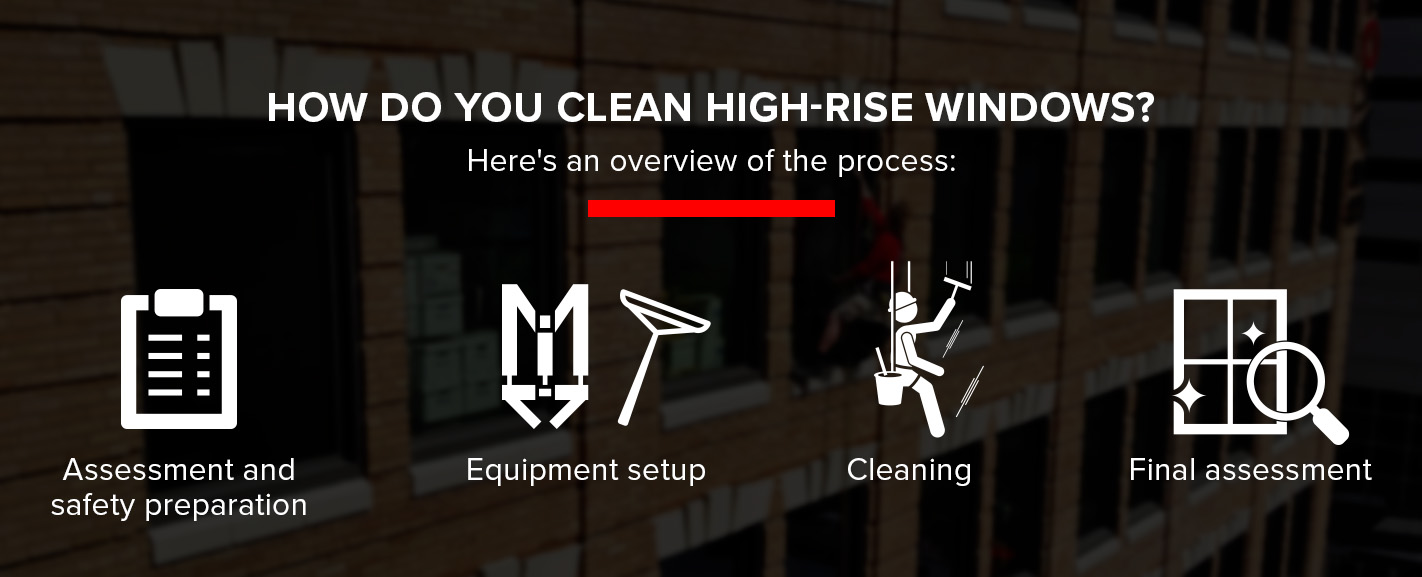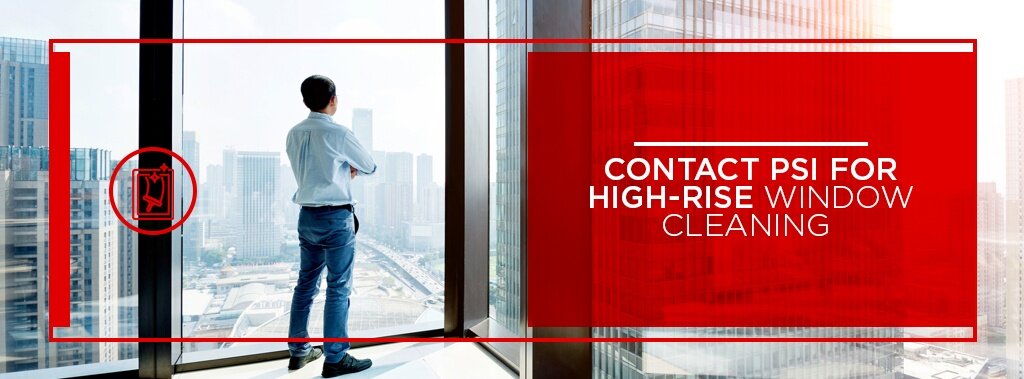
Skyscrapers form a majestic and essential part of many urban skylines. As the urban population of the world continues to grow, skyscrapers will be necessary to maximize vertical space.
In 1985, 2 billion people worldwide lived in cities. Today, over 55% of the world's population — about 4.4 billion people — live in urban areas. Projections show this proportion will rise to 70% of people living in cities by 2050. Unsurprisingly, projections also indicate that by 2050, the number of skyscrapers in the world will increase by a tremendous 41,000 buildings.
With their walls of sparkling glass windows, skyscrapers give the skyline an elegant look — but those windows don't stay sparkling on their own. Rain, snow, smog, salt spray, dust, debris, bird droppings and more conspire to obscure a skyscraper's windows. Fortunately, window cleaners are on the job to get them pristine and shiny once more.
Here are some benefits of clean windows and answers to a few frequently asked questions about high-rise window cleaning:
The answer to this question depends on a few different factors. The type of business in the building, the environment around the building, how much foot traffic the building receives and whether people are allowed to smoke inside the building all contribute to the condition of a skyscraper's windows.
If a building is a clean, nonsmoking office environment and stands on a clean side street, it likely needs its windows cleaned less frequently. If the building is home to industrial work or a medical facility, sees a lot of foot traffic, is located on a busy street or near a substantial body of water or must contend with smog or frequent avian visitors, the windows will need attention more often.
Dangling hundreds of feet in the air is definitely not for the faint of heart, but for any reputable high-rise window-cleaning company, safety is the primary concern. High-rise window cleaning is generally safe if workers use the right equipment and take proper precautions to protect themselves.
Fatalities in high-rise window cleaning are exceedingly rare. High-rise building window cleaners, as a class, see 1.5 million exposures — times when they are working on the side of a building — every year. Yet occupational fatalities remain low, typically about one or two per year.
How much do skyscraper window cleaners make? According to one estimate, a skyscraper window cleaner's salary generally ranges between $20 and $29 an hour, depending on the person's level of skill and years in the profession. These figures can vary, though. In a large, expensive city like New York, a skyscraper window cleaner can command a higher wage — dedicated cleaners there can earn an average salary of about $58,000. However, the people making these figures have generally spent years, even decades, honing their craft.

The answer to this question, too, depends on a few different variables. How big the skyscraper is, how many windows it has and how dirty they are — all these factors can make a difference.
According to a veteran window cleaner interviewed in the New York Times, a standard 50-floor skyscraper would take 30 to 40 days to clean in its entirety. The Empire State Building, by contrast, with its 102 floors, takes six men about four months to clean — and once they're done, the window cleaners have to start all over again.

Cleaning high-rise windows requires an in-depth and specialized process to reach every area of the building and ensure safety for workers. Here's an overview of the process:
High-rise window washing requires a number of different pieces of equipment — some for cleaning and some for climbing and safety.
Skyscraper window cleaners typically use the following cleaning tools in their work:
Skyscraper window cleaners also use tools to navigate the exterior of the building, like:
Beyond the platforms or chairs that skyscraper cleaners use, they need items like ropes to keep these tools in place. Window cleaners also use anchors and roof riggers, which sit on top of or secure to the roof and hold the ropes that suspend climbing tools.
Since window cleaners' safety is paramount, skyscraper window cleaners use different safety tools as well, including:
Other safety tools include carabiners and descenders or grabs, which allow workers to move up and down the building surface smoothly.
Here are some high-rise window-cleaning statistics and fun facts:
The appearance of your building and windows reflects directly on the quality of your business. To keep your high-rise windows sparkling like new, contact PSI. Our high standards of safety, excellence and care make us one of the top high-rise specialists in the entire mid-Atlantic.
Our high-rise window-cleaning services will get your windows shiny and streak-free, and our teams of long-time, expert window washers have the tools to get the job done safely, efficiently and cost-effectively.
Contact us today to learn more.
